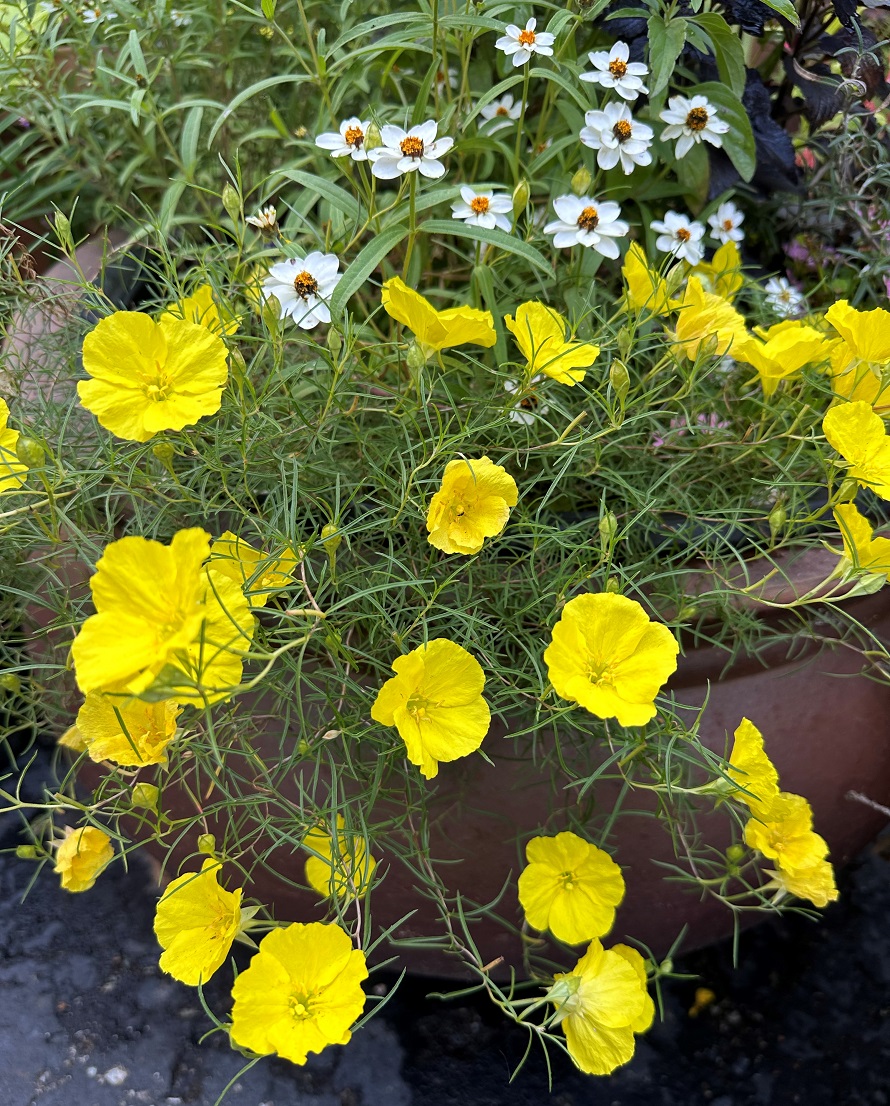
UT Gardens’ August Plant of the Month
Submitted by Jason Reeves, horticulturist at the UT Gardens, Jackson
It is not often a new genus goes mainstream. In 2021, we received Ladybird® Sunglow Calylophus as a trail plant from Proven Winners, and it quickly rose to the top as a winner.
The pure bright yellow flowers of Ladybird® Sunglow Calylophus provide an effortless splash of sunshine to the garden all summer long. The four petaled, two-inch wide flowers float among soft feathery green foliage. As the flowers fade, they turn a deep yellow to apricot color, adding to the appeal. They are self-cleaning and bloom vigorously all summer without any deadheading. It is a great pollinator plant, attracting bees, birds and butterflies to the garden.
The soft needle-like foliage of Ladybird® Sunglow provides an interesting texture, growing four to eight inches tall and mounding 12 to 25 inches wide. The common name “Texas Primrose” comes from the genus Calylophus, which is native to Texas. It is in the same family as our native Oenotheras and shares many of the same characteristics. While not a true primrose, plants in the genus Oenotheras are commonly called primroses. Native to the Southwest, Calylophus grows in the wild in areas with low humidity and periods of drought, but Ladybird® Sunglow doesn’t skip a beat in the humidity of Tennessee.
Ladybird® Sunglow works great planted in the ground at the front of a border or spilling over the edge of a container. They grow best with six or more hours of sunlight and well-drained average to lean garden soil. Heat tolerant, drought tolerant, and deer resistant, they are generally largely pest and problem free.
In container plantings and beds, they mix beautifully with other low water consuming plants, such as Soiree Kawaii® Vinca, ‘Crystal White’ Mexican Zinnia, and Augusta™ Lavender Heliotrope. Once established in the landscape, they are generally carefree. When growing them in pots, treat them as you would most others that do not require much water. Apply one dose of slow-release plant food at planting time and a water-soluble fertilizer once or twice during the growing season to keep them blooming all summer long.
Listed as hardy to zone 8 (10-15°F), the original planting at the UT Gardens Jackson (zone 7) has come back each spring since it was planted in 2021, even with temperatures that dipped below 0°F. Good draining soil is crucial for overwintering this plant, particularly in marginal areas. Add Ladybird® Sunglow to your garden, and it will brighten your summer. This plant also is found in the UT Gardens, Knoxville, while the similar Ladybird® Lemonade can be found in the UT Gardens, Crossville.
The UT Gardens includes plant collections located in Knoxville, Crossville and Jackson, Tennessee. Designated as the official botanical garden for the State of Tennessee, the UT Gardens are part of the UT Institute of Agriculture. The Gardens’ mission is to foster appreciation, education and stewardship of plants through garden displays, educational programs and research trials. The Gardens are open during all seasons and free to the public. For more information, see the Gardens website: utia.tennessee.edu/state-botanical-garden.
The University of Tennessee Institute of Agriculture is comprised of the Herbert College of Agriculture, UT College of Veterinary Medicine, UT AgResearch and UT Extension. Through its land-grant mission of teaching, research and outreach, the Institute touches lives and provides Real. Life. Solutions. to Tennesseans and beyond. utia.tennessee.edu